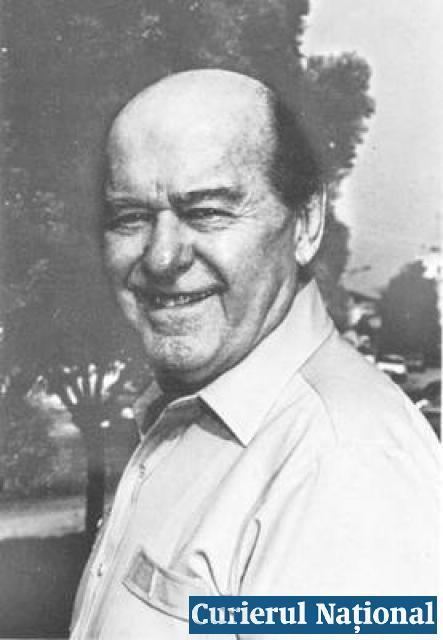Name Eugen Ciuca | Role Artist Period Modernism | |
 | ||
Died 2005, New York, United States Books Art\'s Fourth Dimension: Unforeseen Extension of a New Source in the Artistic Inspiration | ||
How to pronounce eugen ciuca italian italy pronouncenames com
Eugen Ciucă ([e.uˈd͡ʒen t͡ʃjukə]; 27 February 1913 – 26 September 2005) was a contemporary Romanian-American artist known for his monumental sculptures, vivid paintings and drawings of delicate feminine figures. He spent the most successful years of his career in Italy, where he created many works inspired by the Divine Comedy and its author Dante Alighieri. Ciucă's art has been displayed in nearly 100 exhibitions across Europe and the United States.
Contents
- How to pronounce eugen ciuca italian italy pronouncenames com
- Education and career
- Artistic style
- Museum collections
- Monuments
- Awards and accomplishments
- References
Education and career

Born in Miluani village, Sălaj County, he studied Economics at the University of Cluj (1934-1938) and later went to the Academy of Fine Arts in Bucharest (1942-1946) and the Pedagogical Institute of the University of Bucharest (1945-1947). During the Second World War he served as a military officer and went on to create a monument to the heroes of the Romanian army at Piešťany, Slovakia (To The Heroes – 1946).
After the war, Ciucă set up a studio in Bucharest where he worked until leaving Romania in 1968. He also taught Anatomy Drawing at the University of Bucharest and was Director of the Monumental Sculpture Art Studio of Fondul Plastic, UAP, Bucharest (1958-1960).
He held the first Romanian open-air exhibition on Calea Victoriei (1957) and designed The Festive Column (1964), a 20 m high concrete and stone monument that stands in Herăstrău Park, Bucharest. His major Romanian exhibition at Sala Dalles (1965), which coincided with the 700-year anniversary of Dante’s birth, brought Ciucă notoriety and international recognition.
In 1967 he was invited to Padua to build Monument to Dante in Pontelongo. Shortly after that he had two one-man exhibitions in Padua and Rome and was a major exhibitor at the Palazzo Al Valentino in Torino.
The following year he represented Romania for the International Symposium of Sculpture Forma Viva in Yugoslavia (now Slovenia) with the wooden sculpture inspired from Romanian folk art, The Archaic Column (1968).
Prompted by growing international success and the hardship and lack of opportunities in communist Romania, Ciucă left his homeland in 1968. He first moved to Venice, where he set up a studio and continued to participate in many individual and joint exhibits. His work was widely sought after by many private collectors.
Ciucă became a US citizen in 1975, two years after establishing a residence and studio in Long Island, NY. A year later, during the festivities dedicated to the Bicentennial of the American Revolution, his sculpture, Universal Harmony, was put on display at the White House in Washington, DC and still remains in the collection of the Gerald R. Ford Museum.
In 1976 a series of 220 of Ciucă's paintings and sculptures dedicated entirely to Dante Alighieri were on exhibit for four months at the tomb of the poet at Chiostro Di Dante in Revenna.
He kept working and traveling between Italy and the US for many years. In 1984, he moved his NY residence to Jackson Heights - Queens and his Italian residence to Cappricio – Padua. He retired permanently to Jackson Heights in 1989, where he continued to work in spite of his old age.
Artistic style
Ciucă was a prolific artist whose work, described as both folkloric and modern, encompasses many media. A master at sculpting in polychrome marble, granite, wood, onyx, ceramics, bronze, copper and mosaic, he also completed numerous paintings – many on glass – as well as watercolors, etchings and drawings.
Throughout his career, which spanned more than a half-century, Ciucă explored several themes and concepts. Through his work, he blended elements of Romanian folk art with the more contemporary concept of art’s fourth dimension, in which the artist provides a visual expression for feelings such as optimism, curiosity, remorse or fear.
A vast amount of Ciucă's art was dedicated to Dante Alighieri, poet and author of The Divine Comedy. Inspired by the beauty of Dante’s muse Beatrice, he created countless sculptures, paintings and drawings depicting the delicate feminine figure that would become his trademark. In addition to several monumental sculptures representing the poet, Ciucă created a series of paintings named The Divine Comedy in 600 Images.
